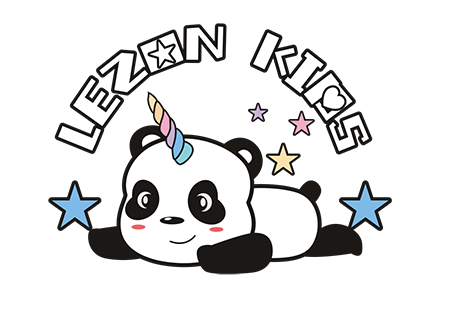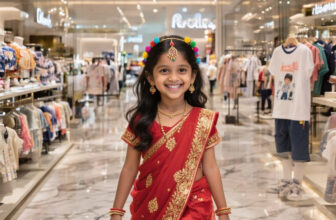A list of children’s clothing brands sold at Amazon
Here’s a curated list of popular children’s clothing brands consistently sold through Amazon.com or Amazon marketplace sellers, categorized for easier navigation:
Mainstream & Popular National Brands
- Carter’s: Everyday wear, baby essentials (onsies, pajamas, sets), dominant in infant/toddler sizes.
- OshKosh B’gosh: (Often linked w/ Carter’s) Classic kids’ clothes, especially known for overalls, denim.
- Gerber Childrenswear: Baby basics, bodysuits, simple tees, socks.
- The Children’s Place: Wide range for kids and baby (+/- TCP owns Gymboree rights sold via Amazon).
- Hanes: Basic kids’ underwear, socks, undershirts, simple tees.
- Fruit of the Loom: Similar to Hanes, basics, underwear, value packs.
- Garanimals: Affordable basics, simple styles, mixes & matches easily.
- Levi’s Kids: Children’s jeans, jackets, overalls.
- Spyder Kids: Performance outerwear and sportswear.
- Columbia Kids: Outdoor apparel, jackets, fleeces.
Value & Budget-Friendly Picks
- Cat & Jack: (Target brand) Extensively sold via Amazon Marketplace. Popular everyday wear, known for quality/value.
- LazyOne: Kids pajamas (esp. footies), fun prints.
- Jumping Beans: (Kohl’s brand) Sold via Amazon Marketplace. Basic clothes, playwear.
- Wonder Nation: (Walmart brand) Sold via Amazon Marketplace. Affordable everyday clothing.
Sustainable & Organic Focus
- Burt’s Bees Baby: GOTS-certified organic cotton basics, simple styles.
- Pact: Organic cotton essentials (undies, tees, basics), ethical production.
- Hanna Andersson: Known for durable, quality knits (famous for striped pajamas) – also organics. (Mainly marketplace).
- Kickee Pants: Ultra-soft bamboo viscose basics, pajamas, sets (popular for babies/toddlers).
Playful Styles & Character Focus
- Marvel Apparel: Kids clothing featuring Marvel superheroes.
- Disney Kids: Official Disney character clothing.
- Star Wars Kids: Official Star Wars apparel.
- RuffleButts/RuggedButts: Ruffled dresses, bloomers, boys’ sets.
Specialty & Niches
- Simple Joys by Carter’s: Amazon-exclusive brand focused on value multipacks (basics, tees, pajamas).
- Primary: Solid-color basics without logos (Also sold marketplace on Amazon).
- OneStep Ahead: Special focus on developmental, sensory-friendly, and adaptive clothing (Primarily marketplace).
- Zutano: Unique prints, mix-and-match styles (infant/toddler), high visibility.
- Under Armour Kids: Performance athletic wear.
- Adidas Kids: Sportswear and sneakers.
Important Considerations 🚨
- Availability: Stock changes frequently! Brands are “generally available,” but specific items/sizes fluctuate.
- Marketplace Sellers: Many brands (especially store brands like Cat & Jack or Jumping Beans) are sold by third-party Amazon marketplace sellers, not directly by Amazon. Carefully check the seller (“Ships from/Sold by”).
- “Ships from/Sold by Amazon.com”: Look for this for Prime eligibility and Amazon’s return policy.
- Amazon Fashion Sub-Brands: Besides Simple Joys by Carter’s, Amazon has experimented with other fashion brands – search “Amazon Brands” in Clothing.
- Search Tips:
- Use precise terms:
"Carter's 18 month pajamas"or"Primary color tees for kids". - Filter by Brand on the left side.
- Scan product pages for the official manufacturer Brand Name listed near the title.
- Use precise terms:
This list provides a strong foundation to find kids’ clothing on Amazon across different styles, budgets, and features! Always double-check the seller and item details before purchasing.
how to start a children’s clothing brand
Launching a children’s clothing brand combines creativity, business acumen, and a deep understanding of safety and regulations. Here’s a step-by-step roadmap:
Phase 1: Pre-Launch – Research & Strategy (The Foundation)
- Deep Market Research & Identify Your Niche:
- Analyze Competitors: Who already sells kids’ clothing? What are their price points, styles, quality, strengths, weaknesses?
- Find Your Gap: What’s missing? (e.g., truly sustainable toddler basics, stylish adaptive clothing, uniquely fun prints for boys, affordable organic cotton sleepwear, a specific cultural aesthetic).
- Understand Trends & Needs: What are parents looking for? (Comfort, safety, durability, ease of dressing, value, sustainability, style).
- Define Your Brand Identity & USP (Unique Selling Proposition):
- Mission & Vision: Why does your brand exist beyond making money?
- Target Audience: Be incredibly specific. Newborns? Toddlers? School-age? What are the parents’ values (eco-conscious, budget-focused, trend-driven)? Income level?
- Brand Personality: Playful, sophisticated, minimalist, nostalgic, adventurous?
- USP: What makes you irreplaceable? (e.g., “The only brand using 100% GOTS-certified organic French terry in playful, sustainable colors,” “Clinically-tested sensory-friendly designs for neurodiverse children,” “Vintage-inspired smocking with modern fits”).
- Understand Regulations & Safety Compliance (CRITICAL):
- CPSIA (Consumer Product Safety Improvement Act): Mandatory in the US. Governs lead, phthalates, flammability (especially sleepwear!), tracking labels, testing.
- Flammability Standards: (e.g., 16 CFR Part 1610 for general apparel, stricter 16 CFR Part 1615/1616 for children’s sleepwear).
- Labeling Requirements: Fiber content, country of origin, care instructions, RN number (get one!), manufacturer/importer details, tracking labels.
- Testing: Plan for Third-Party Testing Labs to certify compliance.
- International: Research regulations for any country you plan to sell in (EU has REACH, etc.).
- Plan Your Initial Line & Budget:
- Core Collection: Start small! Focus on 1-2 core pieces (e.g., bodysuits + leggings, PJ sets, t-shirts + shorts). Introduce variations through color/prints. Ensure items coordinate.
- Size Range: Define carefully (preemie, 0-3m, 3-6m, etc.). Consider fit consistency across sizes.
- Seasons/Releases: Plan your first 1-2 collections.
- Realistic Budget: Factor in design, pattern making, samples, fabric/materials, trims (zippers, buttons snaps – ensure safety!), manufacturing, labeling/tags, compliance testing, branding/website, marketing, shipping, business registration/legal fees, operational costs (software, subscriptions). Underestimating is the biggest pitfall.
Phase 2: Product Development & Sourcing
- Technical Design & Tech Packs:
- Sketches/Designs: Create detailed designs.
- Create a Tech Pack: The blueprint for manufacturers. Includes sketches, detailed flat drawings, measurements/specs for ALL grades (sizes), fabric details (type, weight, content, color), trim details (type, size, placement, safety specs like no-snap-back buttons), labeling instructions, stitching details, wash/care instructions, compliance notes. ESSENTIAL for accurate quotes and production.
- Find a Pattern Maker/Grader: Either hire locally or work with a factory that offers this service.
- Source Fabrics, Trims & Manufacturing:
- Fabrics: Research wholesalers. Consider feel, durability, breathability, washability, safety. Prioritize certifications like Oeko-Tex Standard 100 or GOTS if promoting sustainability. Order swatches!
- Trims (Notions): Source safe, compliant zippers, buttons, snaps, elastics, labels. Ensure suppliers provide documentation.
- Finding a Manufacturer:
- Options: Domestic vs. International (e.g., Portugal, Turkey, India, China). Domestic may be higher cost but lower MOQs and easier communication/logistics. International may have lower costs but higher MOQs and complex logistics.
- Sourcing Methods: Alibaba/ImportYeti, trade shows (Magic, Première Vision), agents, direct outreach.
- Vetting: Request samples of their work, check references, discuss MOQs (Minimum Order Quantities), lead times, terms (payment, defects), compliance capabilities. VISIT if possible.
- Sampling & Testing:
- Prototype/Sample: Order samples before full production. Test fit (on various body types if possible), comfort, washability/dryability, durability. Photograph these samples.
- Safety & Compliance Testing: Use an approved 3rd-party lab to test finished samples against CPSIA & flammability standards. Do NOT skip this.
Phase 3: Brand Building & Operations
- Develop Your Brand Elements:
- Brand Name: Memorable, relevant, trademarkable (check USPTO website!).
- Logo & Visual Identity: Colors, fonts, imagery style. Consistent across all touchpoints.
- Labels & Hang Tags: Designs that reflect your brand, contain all legal/compliance info. Include care labels sewn in.
- Packaging: Bags, boxes, stickers – consider sustainability and brand experience.
- Register Your Business & Protect It:
- Business Structure: Choose (Sole Prop, LLC, S-Corp, C-Corp) – consult a small business lawyer/accountant. LLC is common for liability protection.
- Business License: Register with your local city/county/state.
- Employer Identification Number (EIN): Get one from the IRS.
- Trademarks: File for your brand name & logo (highly recommended).
- Price Your Products:
- Carefully calculate COGS (Cost of Goods Sold: all costs to produce each item).
- Factor in fulfillment/packaging costs, marketing costs, overheads, profit margin, your brand positioning (luxury vs. value).
- Use:
Selling Price = (COGS + Packaging + Fulfillment + Marketing Cost Per Item + Overhead Per Item) / (1 - Desired Profit Margin).
- Set Up Sales Channels (Omnichannel Approach is Strong):
- Your Own Website (Essential Brand Hub): Use Shopify, WooCommerce, BigCommerce. High control, best branding/margins.
- Online Marketplaces: Amazon, Etsy, Maisonette, Walmart.com (lower margins, high volume potential, good for reach).
- Wholesale/B2B: Approach local boutiques, specialty children’s stores, relevant online retailers. Requires line sheets, wholesale terms.
- Pop-ups/Local Events: Build brand awareness locally.
Phase 4: Marketing & Launch
- Pre-Launch Marketing:
- Build an Email List: Offer a launch discount or valuable content for sign-ups.
- Social Media (Visual Platforms are Key): Instagram, Pinterest, TikTok. Show behind-the-scenes, product development, lifestyle images. Your target parents ARE here.
- Create Compelling Content: Blog posts about parenting, kids fashion trends, your brand story, your USP topic (e.g., importance of organic cotton).
- Launch & Sell!
- Prepare Inventory: Based on realistic sales projections from pre-launch interest.
- Fulfillment Strategy:
- Self-Fulfillment: Manage packing/shipping yourself (feasible at launch volume).
- 3PL (Third-Party Logistics): Outsource warehousing and shipping (scales better).
- Marketing Blitz: Email your list, launch ads (FB/Instagram, Pinterest ads work well for kids), reach out to relevant influencers/mommy bloggers for reviews, PR outreach (local media, parenting blogs).
Phase 5: Growth & Operations
- Customer Service Excellence:
- Clearly define shipping/return policies.
- Respond quickly and kindly to inquiries.
- Handle issues gracefully.
- Analyze & Iterate:
- Track website analytics, sales data, marketing ROI.
- Gather customer feedback (reviews, surveys).
- What sold? What flopped? What are customers asking for?
- Use data to refine your next collection, marketing strategy, pricing.
- Build Relationships & Scale:
- Cultivate relationships with retailers, influencers, and customers.
- Build loyalty programs.
- Expand your line thoughtfully based on data and brand alignment.
- Explore new sales channels.
Key Resources & Costs to Remember:
- Legal: Lawyer consult, trademark fees, business registration.
- Compliance: Safety testing labs, RN number.
- Design & Production: Tech pack creation, pattern/grading, fabric/trim costs, sampling, manufacturing.
- Brand Identity: Logo design, packaging design, label/hangtag design & production, custom tags/labels.
- Operations: Website/e-commerce platform, photography, accounting software, order management/inventory system.
- Marketing: Email marketing tool, ads, photography costs, influencer/PR, shipping supplies.
- Inventory: Cost to produce your initial run + storage.
- Fulfillment: Shipping costs, packaging, 3PL fees.
Biggest Pitfalls to Avoid:
- Skipping Deep Research & USP: Just “making cute clothes” isn’t enough.
- Ignoring Safety Compliance: This is legally mandatory and essential for trust.
- Underestimating Costs/MOQs: Be brutally realistic. Start small.
- Poor Tech Packs: Leads to production errors and unusable stock.
- Neglecting Marketing: No one will find you without it. Budget time and money.
- Ordering Too Much Initial Inventory: Sell out is better than being stuck with unsold stock.
Starting a children’s clothing brand is challenging but rewarding. Focus on STRATEGY, QUALITY, SAFETY, and AUTHENTICITY from day one. Be prepared for a marathon, not a sprint! Good luck!





